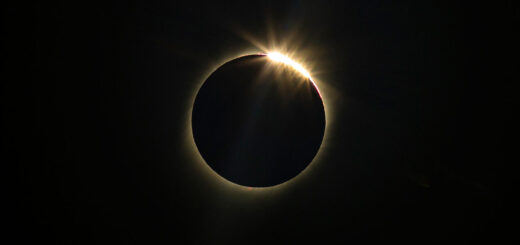Space photos: The most amazing images this week!

A weather satellite captured an image of Ireland, NASA’s latest Mars rover spots a dust devil and the Hubble Space Telescope took an image of a peculiar galaxy located 40 million light-years away from Earth.
This night sky photo from Skull Valley, Utah, shows zodiacal light on March 1, 2021. In this picture, zodiacal light is the faint column of light seen here extending up from the horizon. The glow is created as sunlight reflects off tiny dust particles in the solar system. New data from NASA’s Juno mission suggest that these particles might have originally been Martian dust that was swept off the Red Planet during major storms.
The NOAA-20 satellite captured this stunning image of Ireland on March 16, 2021, one day before St. Patrick’s Day. NOAA is the abbreviation for the National Oceanic and Atmospheric Administration, which operates this weather satellite. According to the agency, this satellite carries five instruments that help scientists monitor vegetation, surface temperatures, clouds, fires, volcanoes and snowfall.NASA astronaut Victor Glover, seen here in a photograph taken by Japan Aerospace Exploration Agency (JAXA) astronaut Soichi Noguchi from inside the International Space Station (ISS), performed a spacewalk on March 13, 2021. Glover and fellow NASA astronaut Mike Hopkins ventured out of the ISS’s Quest airlock for the 6 hour and 47 minute extravehicular activity (EVA). This was the 237th spacewalk in support of the assembly and maintenance of the ISS.Engineers on NASA’s Perseverance rover mission noticed a dust devil in the background of images captured by one of the rover’s cameras. Perseverance captured its first imagery of a Martian dust devil as the spinning air column appeared behind the rover’s robotic arm. “The dust devil is moving right to left and creating whirlwinds of dust in its path,” Perseverance mission representatives wrote in a tweet about the imagery on Tuesday (March 16).
An image of Mars captured by the United Arab Emirates’ Hope spacecraft on Feb. 26, 2021. The topographical feature that appears on the right side of this image is Olympus Mons, the largest volcano in the solar system. The Hope mission is designed to study Mars’ atmosphere over the course of one Martian year, which is about the same length as two Earth years.
Martian dunes
This picturesque scene, captured by the European Space Agency’s ExoMars Trace Gas Orbiter, is a red, Martian dune field striped by wispy clouds. The landscape is located in the Lomonosov crater in Mars’ northern hemisphere. The orbiter, which launched in 2016 and began full science operations in 2018, uses four instruments to take detailed images of Mars and study atmospheric processes. The data collected by the orbiter has aided in the scientific investigation of methane on Mars. — Chelsea Gohd
Faint threads
Hubble spotted this lenticular galaxy, a cross between a spiral and elliptical-shaped galaxy, known as NGC 1947. The galaxy, which was originally discovered over 200 years ago, can only be viewed from the southern hemisphere and can be found in the Dorado (Dolphinfish) constellation about 40 million light-years away from Earth. — Chelsea Gohd
The Emerald Isle
Outflows from infant stars
Researchers using previously collected data from the Hubble and Spitzer space telescopes and the ESA’s Herschel Space Telescope to study 304 developing stars in the Orion Complex, which is the closest star-forming region to Earth. In this new study, they looked at the star-forming process as, when hydrogen clouds collapse into new stars, there is a ton of leftover gas. Previously, scientists thought that the hot gas leaves young stars in outflowing jets and intense winds which stops its growth, but this new study finds fault in this explanation. — Chelsea Gohd
A hot, hot fire
This billowing plume is coming from the core stage for NASA’s Space Launch System rocket during a second hot fire test on Thursday (March 18). The test, which took place on the B-2 Test Stand at NASA’s Stennis Space Center near Bay St. Louis, Mississippi, lasted for almost 500 seconds (or over 8 minutes), far surpassing the 4-minute goal that the team set for the test. Hot fire tests ignite a rocket’s engine, making sure it works as intended, without the rocket actually taking off anywhere. — Chelsea Gohd



 Creators of mankind
Creators of mankind Description of “Tall white aliens”
Description of “Tall white aliens” Where they came from?
Where they came from? About hostile civilizations
About hostile civilizations The war for the Earth
The war for the Earth “Tall white aliens” about eternal life
“Tall white aliens” about eternal life Video: “Nordic aliens”
Video: “Nordic aliens” Aliens
Aliens Alien encounters
Alien encounters The aliens base
The aliens base UFO
UFO Technology UFO
Technology UFO Underground civilization
Underground civilization Ancient alien artifacts
Ancient alien artifacts Military and UFO
Military and UFO Mysteries and hypotheses
Mysteries and hypotheses Scientific facts
Scientific facts


















